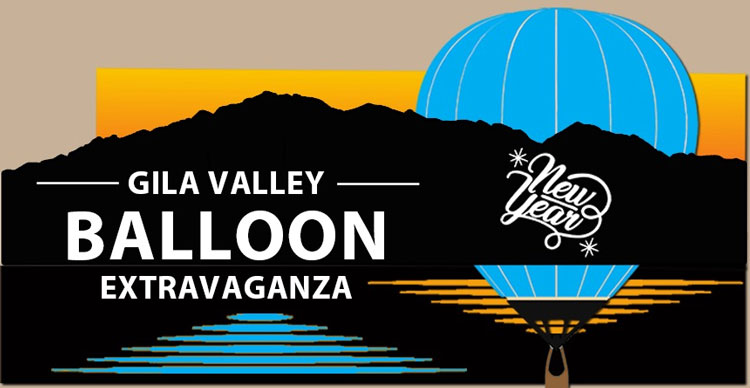This guide serves Arizona renters, gig workers, families with uneven paychecks, and new residents still building financial safety nets. In this state, “urgency” means a mechanic calling with a $600 brake repair, a $250 utility shutoff warning during a heatwave, or a $400 vet visit before payday. These are not abstract possibilities but daily realities that come without warning.
The focus is on practical choices that ordinary people can make within hours or days. The intent is not to lecture about saving habits but to explain what can realistically work when cash is short and time is tighter. Arizona’s economy blends tourism, logistics, and service work — sectors where pay schedules shift and emergency funds vanish quickly between seasons.
The Top Surprise Costs in Arizona
Unplanned expenses appear faster than pay cycles. Across the state, the five most frequent types of financial shocks carry similar price tags but arrive from different directions:
- Auto repair — battery replacements, brake jobs, or flat tires typically run $250–$900. A full tire set can exceed $700, and tow services between Tucson and Phoenix can add $150.
- Medical and dental — urgent care visits range from $150 to $250, and an ER co-pay without insurance may exceed $500. Even insured patients face $100 prescriptions or imaging fees.
- Utilities and housing — summer power bills spike to $300–$400; past-due fees add $50–$100, and a lease break or new deposit can require $700 upfront.
- Child and pet care — daycare for a single day can reach $80–$120; emergency vet procedures average $400–$800. Boarding costs climb during school holidays.
- Work-critical tech — a broken phone, lost charger, or laptop failure can stop income streams; replacements cost $300–$1,200, depending on brand and urgency.
Each of these pressures arrives with a short payment window — typically 24 hours to one week. The shared pattern: urgency collides with irregular income.
What the Data Shows on Cash Buffers
The Federal Reserve household economics survey shows that nearly 37% of U.S. adults cannot pay a $400 emergency expense using cash or its equivalent. The numbers worsen for gig workers and households earning under $50,000 per year. In Arizona, where tourism, warehousing, and construction dominate, income fluctuates by season and weather, which means savings often follow the same pattern.
The trend over the past five years remains flat: despite rising wages in some sectors, household liquidity has not improved. Rent inflation, health costs, and vehicle insurance premiums outpace income growth, erasing small gains in savings rates. Many residents live in a “paycheck gap” zone — not destitute, but unable to absorb one large bill without outside help.
Among households with children, survey data suggests only one in three has any designated emergency fund. Seasonal workers — landscapers, drivers, hotel staff — often rely on relatives or employer advances. For them, volatility, not financial carelessness, explains most shortfalls.
Local Cost Context and Price Shocks
Arizona’s mix of intense heat, long commutes, and rapid urban expansion makes budgeting harder than in cooler, denser states. Utility bills in Phoenix and Mesa regularly double between May and September as air-conditioning runs nonstop. A two-bedroom apartment may face a $320–$400 electricity charge during peak heat, compared to $160 in February.
Rent trends follow the same upward curve. Data from regional property groups shows average lease renewals climbing 8–10% year over year. Tenants moving between complexes face new deposits of $600–$1,000 plus cleaning fees. At the same time, car dependence drives up transportation exposure: gasoline prices swing between $3.20 and $4.60 per gallon in the same quarter, and suburban drivers log 1,000+ miles per month.
Insurance costs rise with storm seasons. Summer monsoon damage increases claim frequency, nudging premiums up 5–7% annually. For households already on thin margins, this combination creates “micro-shocks” — smaller but constant expenses that erode any attempt to build reserves.
Fast Cash That Does Not Add Debt
When money runs out mid-month, the fastest solutions are not always loans. A few quick actions can create breathing space without future interest:
- Employer help — paycheck advances or earned wage access apps let employees tap a portion of earned income. Typical fees stay under $5 for early withdrawal, and funds arrive in minutes.
- Bills and utilities — Arizona Public Service (APS) and Salt River Project (SRP) allow deferred payment plans and summer bill smoothing. Hospitals run charity care or hardship relief desks.
- Sell or swap — bicycles, tools, and phones hold high resale value on local marketplaces; pawn shops, buybacks, or secondhand stores offer temporary liquidity.
- Side income in 48 hours — rideshare, delivery, or weekend shifts can yield $120–$200 daily, depending on hours and platform demand.
- Family agreements — clear, written repayment terms preserve relationships and protect both sides from tension.
These methods buy time for essential bills without adding new obligations. The challenge is logistics: many people lack the hours or resources to organize them under deadline pressure. Still, they remain safer than borrowing when repayment ability is uncertain.
Short-Term Credit in Arizona: Role, Rules, and Real Costs
For those with stable income but zero savings, small-dollar credit serves as a temporary bridge. Arizona regulates these loans through rate caps and disclosure requirements designed to prevent hidden costs. Borrowers typically need proof of steady income, an active checking account, and a government-issued ID. Loan amounts often range from $100 to $1,000, covering short-term necessities like car repairs or utility bills.
Processing times are fast — approval can take under an hour, and funds arrive the same or next business day. Lenders express charges as flat fees rather than interest; for example, borrowing $200 for two weeks might cost $40. When annualized, this equals a triple-digit APR, but in dollar terms, it competes with overdraft penalties or reconnection fees that can exceed $35 per incident.
As many Arizonans prefer digital applications because they save travel time and offer rapid responses, some residents turn to a licensed AZ online lending platform for urgent financial needs. Such a platform provides fast, legally compliant solutions during emergencies, helping cover unexpected expenses like car repairs or medical bills without the delays of traditional banks. However, short-term lending often involves higher costs and interest rates, so it’s important to review repayment terms carefully. When used responsibly and only for genuine emergencies, this type of online service can offer quick relief while preserving financial stability and preventing long-term debt.
Risk Controls That Keep Debt in Check
Financial discipline matters more than approval speed. A few simple rules help residents stay solvent even under stress:
- Debt-to-income cap — limit all active debt payments, including short-term credit, to no more than 35% of monthly income. If income drops, freeze new borrowing until the ratio returns below that line.
- Repayment window — align payoff dates with verified deposits such as payroll or benefit transfers. Avoid stacking two loans within one cycle.
- Fee awareness — know the full repayment amount. If a $400 loan costs $60 over 14 days, compare that to late fees or service disconnections before deciding.
- Backup plan — identify one fallback if repayment stalls, such as partial deferment or community relief.
- Exit rule — after closing a short-term loan, wait at least 30 days before taking another. That cooldown prevents habitual borrowing.
Following these guidelines transforms high-cost credit from a spiral into a one-time bridge.
Bank and Credit Union Options in Arizona
Some Arizona banks and credit unions offer safer short-term lending alternatives. Credit union PALs (Payday Alternative Loans) provide $200–$2,000 for one to six months with APRs capped at 28%. Banks, including U.S. Bank and Bank of America, run small-dollar programs that issue $100–$500 loans repaid automatically in three equal installments.
Community development financial institutions (CDFIs) in Phoenix, Tucson, and Flagstaff design emergency products for moderate-income borrowers. Approval relies on job stability rather than credit history, and interest stays far below storefront payday rates. Decision times range from a few hours to two days, making them practical when deadlines allow. Many also offer financial counseling, helping borrowers plan next steps beyond repayment.
Aid Routes That Reduce the Bill
Not every crisis demands new credit. Local and state programs can erase part of the expense itself:
- Medical — nonprofit hospitals must maintain charity care programs; eligible patients receive partial or full forgiveness on unpaid balances. Interest-free plans stretch larger bills over 6–12 months.
- Utilities — APS, SRP, and Southwest Gas provide arrearage reduction and deposit waiver programs when proof of hardship exists.
- Housing — city-level emergency rent bridges and eviction mediation services assist tenants behind on payments.
- Transport — regional agencies supply car repair vouchers or monthly transit passes for residents needing work transportation.
Accessing these routes often takes paperwork, but saves far more than short-term borrowing would cost.
A 48-Hour Action Plan
Emergencies improve with order. A structured response prevents panic decisions and wasted fees.
- Hour 0–2 — confirm the bill’s accuracy, request a short hold, and record due dates or shutoff times.
- Hour 2–8 — apply for available payment extensions, charity aid, or employer advances; document outcomes.
- Day 2 — if a balance remains, compare all remaining options side by side — including total costs, interest, and repayment timing — then commit to the least expensive path with a defined payoff date.
This framework keeps action focused and measurable, cutting emotional stress when time feels scarce.
Prevention Over the Next 90 Days
Recovery doesn’t end when the urgent bill is paid. Building a small financial cushion changes how the next crisis feels.
- Starter fund goal — aim for $400 in 90 days by reserving about $35 weekly through direct deposit or cash envelope methods.
- Heat-aware car care — Arizona’s climate wears batteries fast; test them every summer and replace after 24 months to prevent $700 emergency repairs.
- Coverage tune-up — choose insurance deductibles you can realistically cover without new borrowing.
- Utility level pay — enroll in average-bill programs that smooth seasonal spikes, turning a $380 July bill into steady $250 payments year-round.
These habits reduce volatility. Each dollar stored or cost flattened becomes a buffer against the next mechanical failure or medical invoice.
Final Perspective
Financial emergencies test more than wallets — they test organization. In Arizona’s fluctuating economy, staying prepared means combining practical relief, smart borrowing, and steady prevention. Whether the help comes from a local aid office, a credit union, or an online platform, the key lies in timing and discipline. Quick access matters, but repayment planning matters more.
With awareness of real costs, transparent lenders, and local safety nets, Arizonans can navigate sudden expenses without sinking deeper into debt. Urgencies may not disappear, but a measured, informed approach ensures they remain temporary challenges — not lasting burdens.












